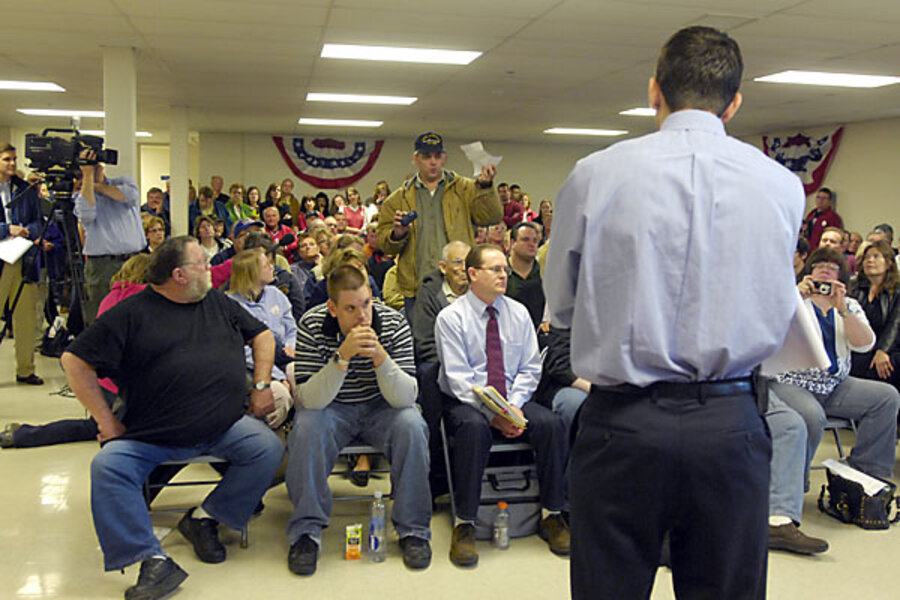The ‘People’s Budget’ and high tax rates
Loading...
Will Donald Trump bring Barack Obama’s birth certificate to the Royal wedding? I have no idea, but now that I’ve made our Web optimization folks happy, here is another question: What’s the deal with the People’s Budget, the fiscal plan released this week by 80 congressional progressives?
The answer is likely to drive less traffic than either The Donald or The Royals, but it is nonetheless worth exploring. After all, Paul Krugman called it, “the only major budget proposal out there offering a plausible path to balancing the budget.” Depends, I suppose, on what you mean by plausible.
The Congressional Progressive Caucus’ budget is, at 30,000 feet, the mirror image of the House-passed fiscal plan developed by Budget Committee Chair Paul Ryan (R-WI). While the House GOP budget shows what happens when you try to slash the deficit with only spending cuts, the left’s budget shows what happens when you just raise taxes and cut defense spending.
Ryan would remake Medicare, cut projected Medicaid spending by $800 billion and other domestic programs by half over a decade—and he’d still end up with a deficit of $400 billion in 2021. The progressives create impossibly high tax rates, and while they claim to balance the budget in 2021 (it is very hard to confirm their numbers), they almost certainly won’t after that.
While Ryan would cap taxes at about 19 percent of Gross Domestic Product, the liberals say their plan would generate revenues of 22 or 23 percent—roughly matching spending.
Mimicking President Obama, their plan would retain the Bush-era tax rates and some tax credits for those making less than $200,000 ($250,000 for joint filers). In addition, it would protect middle-income families from the Alternative Minimum Tax for another decade.
Beyond that, the tax increases in this plan are breathtaking. It would restore pre-2001 income tax rates for those making between $200,000 and $1 million and create five new brackets for higher earners, topping out at 49 percent for those making $1 billion or more. Capital gains and dividends would be taxed at ordinary income rates for those making $1 million or more (up to 49 percent). It would also cap the value of itemized deductions for high-income taxpayers at 28 percent (another Obama idea), raise Social Security payroll taxes for both workers and employers, and raise the gas tax by 25 percent. There’s more, but you get the drift.
For businesses, the plan would leave the top corporate rate untouched at 35 percent, but tax financial transactions in various new ways. It would require multinationals to pay tax on foreign income as it is earned, ending the practice known as deferral where overseas income is not taxed until it is brought home. It would also raise taxes on oil, gas, and coal producers.
The problem with these very high tax rates, of course, is that the wealthy will find ways to avoid them. Some may incorporate and take advantage of those much lower corporate rates. Rich individuals will shelter or defer income, or find ways to move it (or themselves) offshore. Corporations will surely decamp for tax havens.
I was disappointed that, beyond the 28 percent cap on deductions, the plan failed to tackle the $1 trillion in tax preferences that litter the revenue code. You’d think that liberals desperately seeking revenue might find ways to, for instance, make the mortgage interest deduction more progressive by turning it into a credit. But instead they seem happy to try to enhance tax fairness by merely raising rates on the rich—by a lot.
Like most budget plans out there, this one is worthy of some praise. Most important, it shows that even the Democrat’s left flank sees deficit reduction as a serious obligation. The debate has moved far enough along that even the progressives feel a need to get in the game. Good for them.
But the plan itself is deeply flawed and, sadly, profoundly conventional. Its greatest sin is that it lacks imagination. The authors of the People’s Budget knew their plan had no chance of ever becoming law. That should have liberated them to get creative. Instead, they remain trapped in the box that George Bush built for them.
Add/view comments on this post.
--------------------------
The Christian Science Monitor has assembled a diverse group of the best economy-related bloggers out there. Our guest bloggers are not employed or directed by the Monitor and the views expressed are the bloggers' own, as is responsibility for the content of their blogs. To contact us about a blogger, click here. To add or view a comment on a guest blog, please go to the blogger's own site by clicking on the link above.





